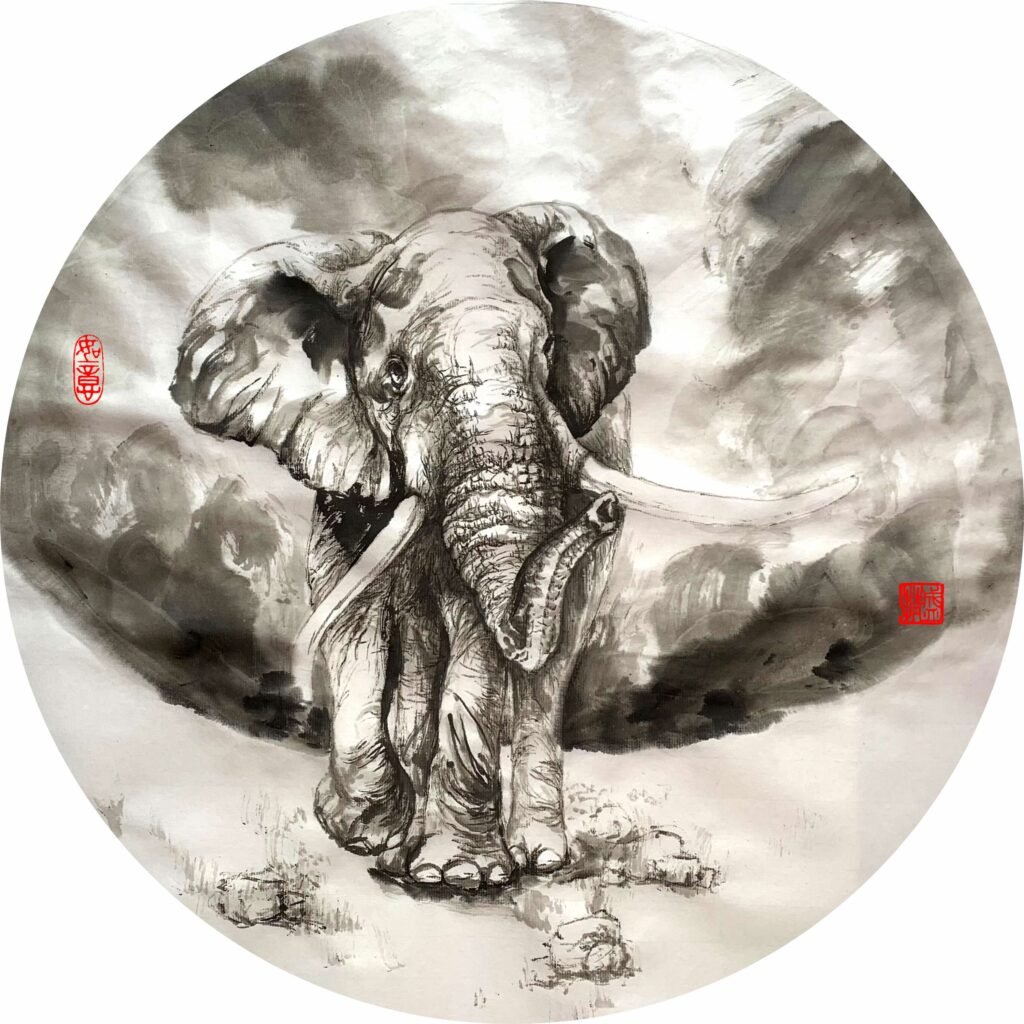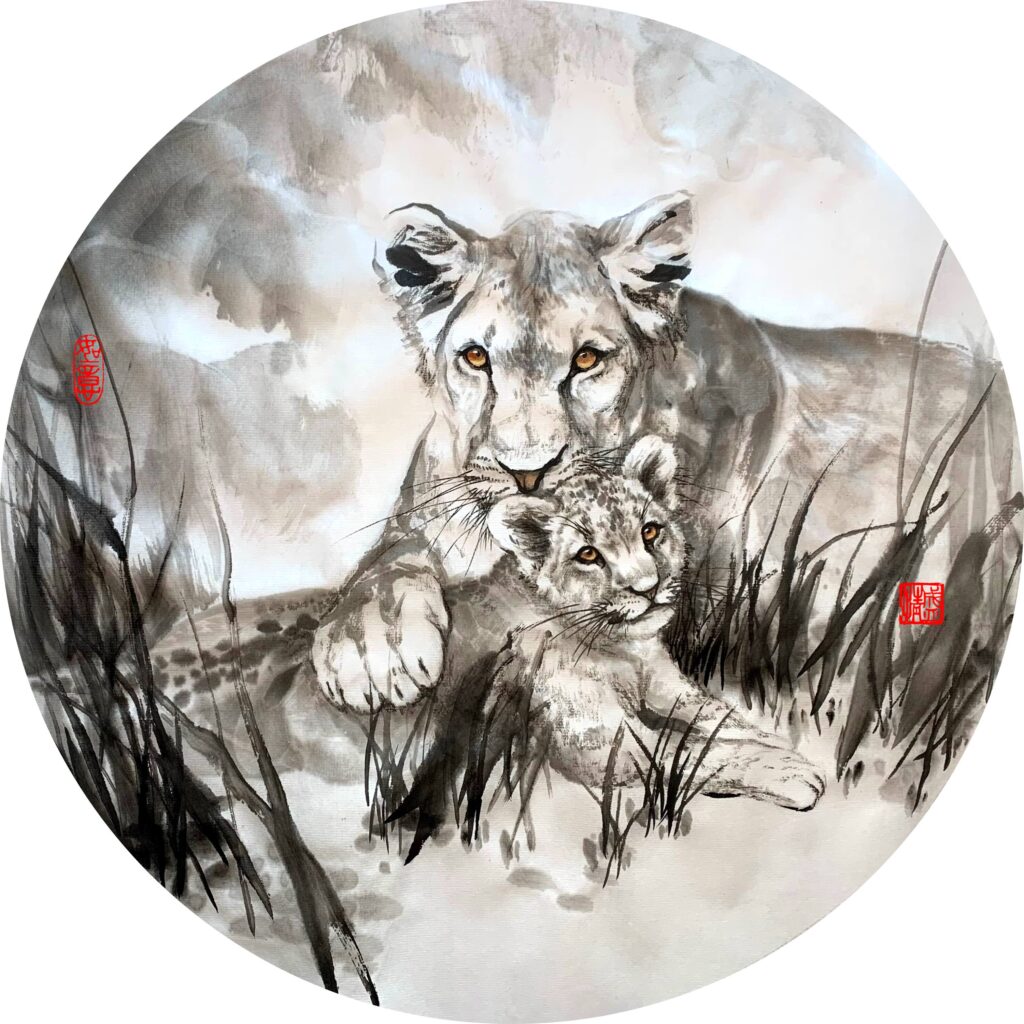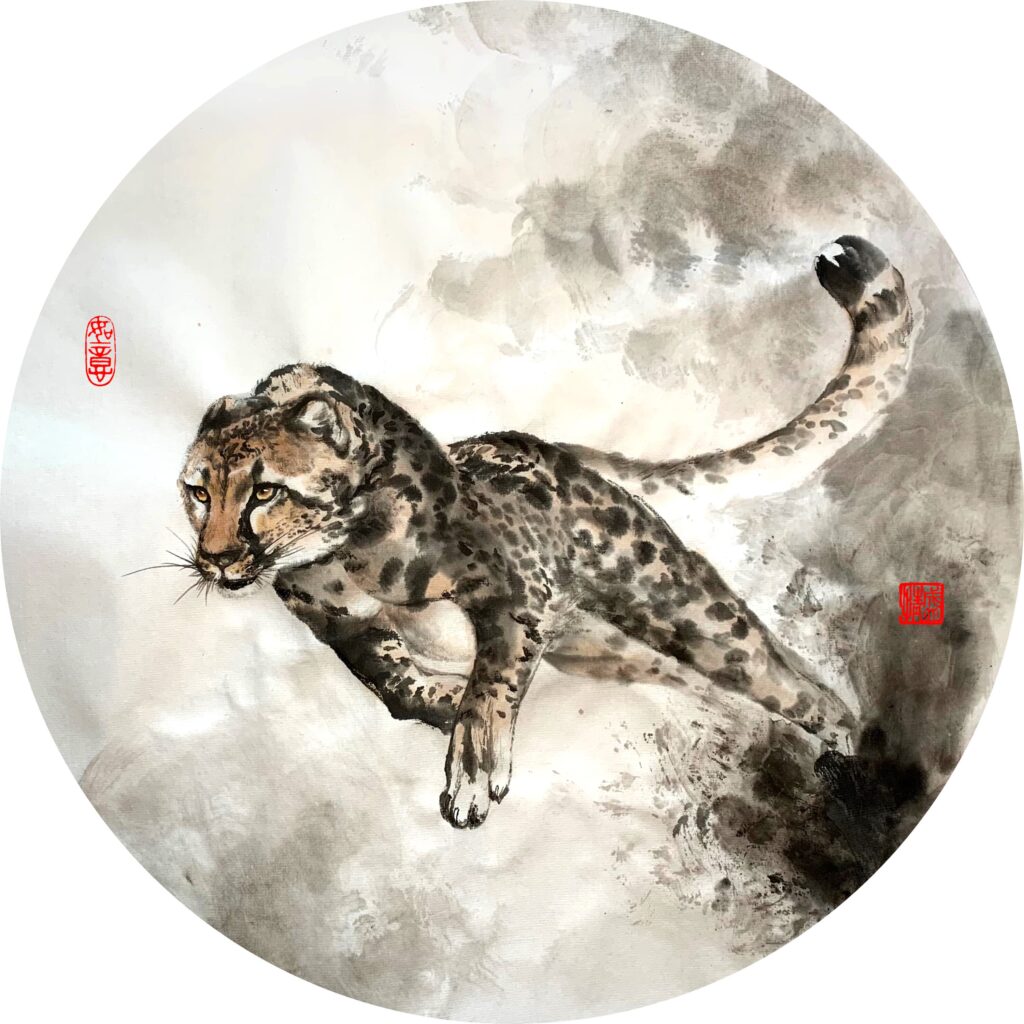In our previous posts we discussed the life of brushes, how they are made and we even briefly talked about their selection and maintenance. Sometimes when we practice according to the ancient painting or calligraphy books, but the strokes we make are simply not similar to the master’s. A lack of practice is surly a main reason, but the wrong use of our brushes can also be a major contributing factor. Therefore in this post let us categorise the various brushes, learn about their properties and then I will give you suggestions about how to select them for various purposes.

Categorisation
You must know that generally speaking we have goat hair, weasel hair and mixed hair brushes that stand out among the many natural hair brushes, for the purpose of oriental art creation. The three hair styles are the most common and price-quality balanced options which are preferred by the majority of creators. The goat hair brushes are usually softer, multi-purpose, durable, and can contain a greater amount of ink for art creation; Weasel hair on the other hand is tougher, stronger, more flexible, yet hard to be made into large brushes and are rather pricy; Mixed hair (often weasel-goat mix) usually has a tougher core and a softer coat, therefore it has the quality of both of the brush types. The other common hairs include rabbit hair, badger hair or synthetic fibers, and the prices vary. The main differences in use are the same as the distinctions between the goat and weasel hairs, so these other “less main-stream” hairs are more for personal pleasures. Depending on where and when the hairs of animals are collected, plus the manufacturing techniques, the quality and characteristics of the brushes can still be rather different, and so is the price.
If you have payed more attention however, you should also realise that the length-width proportions are not always the same among brushes – some brushes are extremely long, some rather short, while others are in between. There are also brushes that are simply chunky. Do you know for what reasons these differences are made?

Short Hair Brush
The most famous of the short hair brushes is the “chicken spur”, from the name we can assume the look of these brushes. Now we can call these brushes the “garlic head” brushes too, also because of the shape. These are rather ancient brushes that have been made and used in the Jin and Tang Dynasties (around the 6th century). At this time the paper making was not mature yet, and therefore brushes needed to be rough and tough, and these short brush heads became very useful. During the Jin and early Tang Dynasties, the most popular calligraphy scripts were seal and official scripts, so the best fit for these brushes would also be these rather ancient scripts, especially the official scripts. The strokes required in the official script are solid with great strength, long and thin brushes simply fail to do the job.
Long Hair Brush
Some of the brushes appear to have rather long brush head compared to the width. They are usually brushes chosen for their flexibility, and therefore the best use for them are the faster and more fluid strokes in calligraphy, such as the cursive scripts. The long hair brushes often have mixed hair or goat hair, but the control required for the goat hair brushes is higher, because when the brush does not naturally “push back”, it becomes more difficult, though it is great practice.
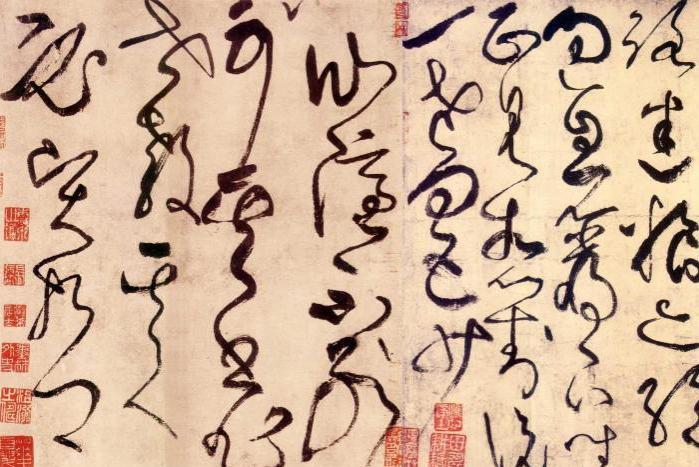
Medium-Length Brush
In between the extremes there is the all purpose medium length brush. These are suitable for quite a lot of situations, and are often seen in the most hair types. So if you are beginning to practice either calligraphy or painting, it is best to choose a medium-length brush, and the easiest hair type would be mixed hair. In fact, as a beginner, if you get used to a special kind of hair length or hair type, it may trigger some bad habits that hinders your future advances. The medium length brushes are also a great choice for regular script practice.

Brush Size
The sizes of brushes vary a lot, and for different maker of brushes, the categorisation of large-medium-small is never the same. Therefore we simply cannot accurately define the size of a large, medium or small brush. So how to choose the suitable brush size?
The general rule of brush size choice is dependent on the size of character you will write: each stroke of the character you make should not exceed half of the brush’s hair length. This means we almost never use the root area of the brush to write, and this means you should not use small brushes to write large characters – this rule is often neglected by the modern enthusiasts, probably because it is easier to draw thinner and even lines with a small brush I presume, but I cannot stress enough how wrong this practice is.
For paintings everything we have talked above is less strict, and most brushes can be used for painting, but the medium length, small weasel hair brushes are still the best choice for making the finer detail and outlines.
Other Common Brushes
You may have also seen a rather large and short-stem styled brush, we call them the dipper brushes. They are used for writing very large characters, especially on a plaque for the sign of businesses or palaces. The stems can have various shapes and be made from different precious materials, so these can also served as a beautiful decoration in the study.
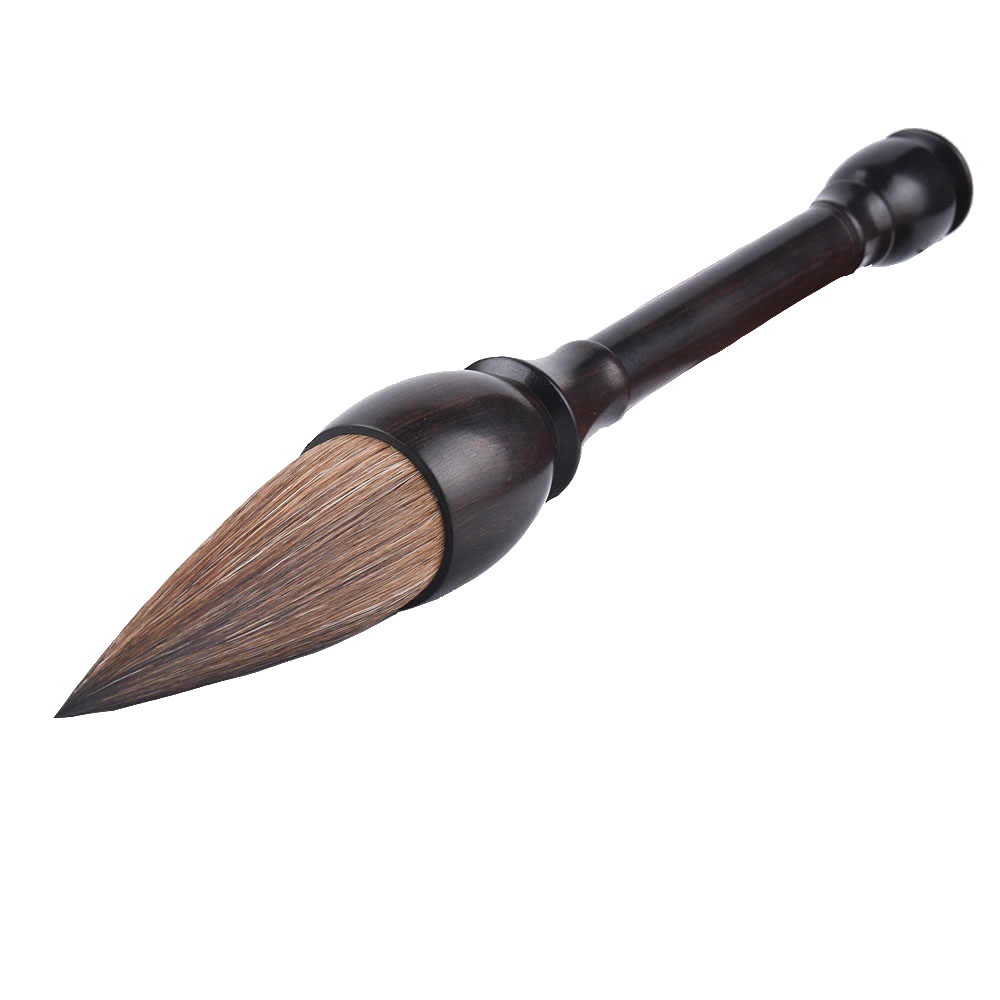
I hope that after reading this post you have better ideas about which brushes to use, and what the different shapes and sizes of brushes are used for. If you need further help with selecting the brushes for yourself, you know where to find me! Also, there will be more brushes arriving in the shop shortly, so stay tuned!
Our Brush Selections
-
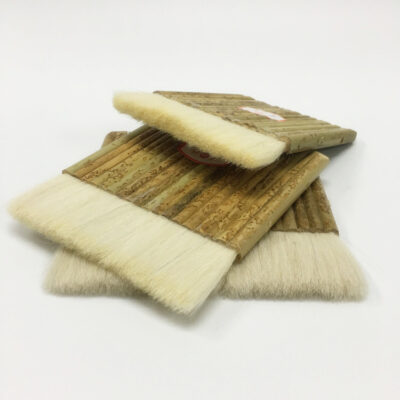 Brush Set For Mounting
Brush Set For Mounting -
 Hard Mixed Hair Brush Set
Hard Mixed Hair Brush Set -
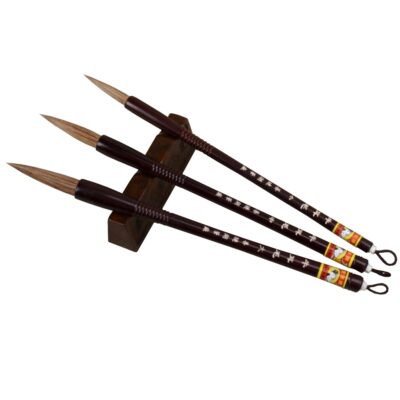 Ox Ear Hair Brush Set
Ox Ear Hair Brush Set -
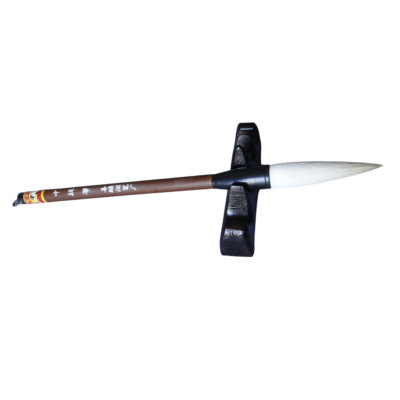 Brush, Large Goat Hair
Brush, Large Goat Hair -
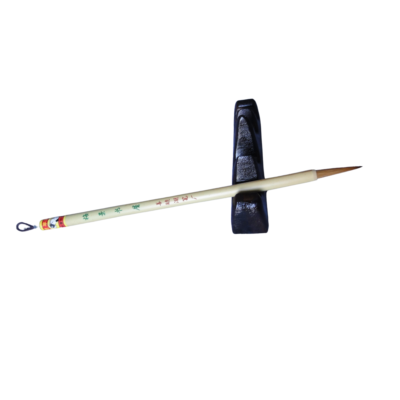 Brush, Small, Weasel Hair
Brush, Small, Weasel Hair -
 Calligraphy Brush Set
Calligraphy Brush Set -
 Dipper-Shaped Brush Set
Dipper-Shaped Brush Set -
 Large Dipper-Shaped Brush Selection
Large Dipper-Shaped Brush Selection -
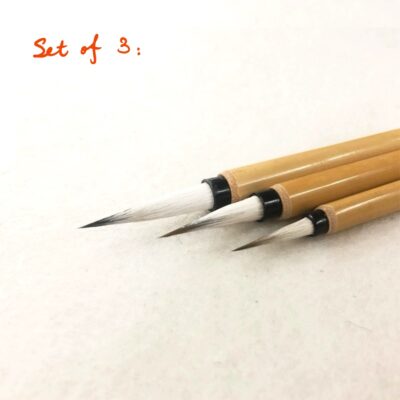 Outline Brush Set – 1
Outline Brush Set – 1 -
 Outline Brush Set – 2
Outline Brush Set – 2 -
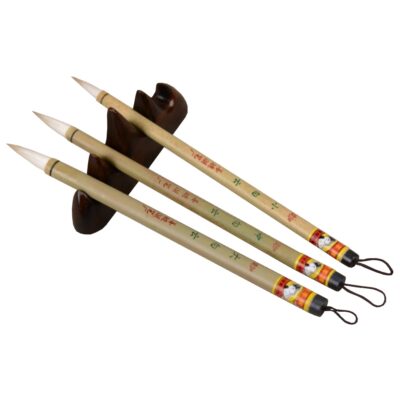 Painting Brush Set
Painting Brush Set -
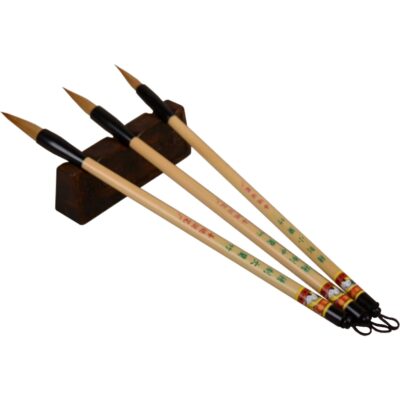 Weasel Hair Painting Brush Set
Weasel Hair Painting Brush Set -
 Brush, Strengthened Goat Hair
Brush, Strengthened Goat Hair -
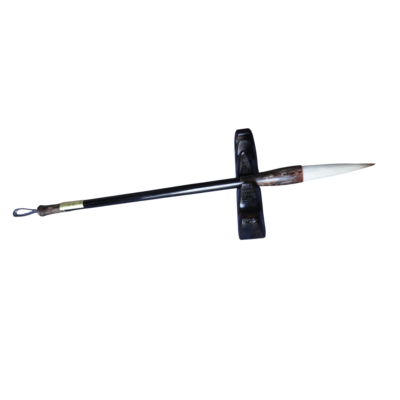 Brush, Large Mixed Hair
Brush, Large Mixed Hair -
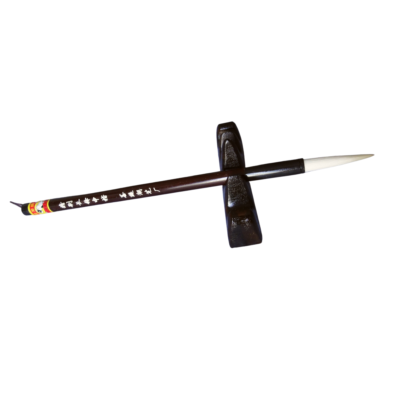 Brush, Medium, Goat Hair
Brush, Medium, Goat Hair
Buy Artworks | Learn Brush Painting | Learn Chinese Calligraphy
